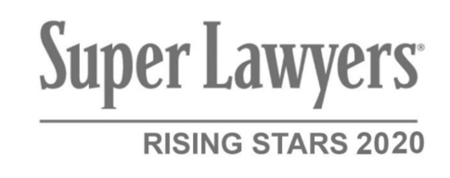What is the Peanutabout?
Published in Bicycle Accidents on May 16, 2017
Reading Time: 3 minutes
Bicyclist safety has been a top priority in Boston for years. As a busy metropolis, Boston is, unfortunately, a high-risk area for bicycle and pedestrian accidents. Part of the problem has been the ineffectiveness of the existing crosswalks and bike paths in the city. As more and more bikers take to the streets in Boston, the city is taking measures to improve the safety of these vulnerable road users. For example, Boston increased the bike lanes from less than a mile in 2007 to 92.2 miles in 2014. Another bike safety measure that may be in Boston’s future is the “peanutabout” in Inman Square in Cambridge – an innovative new kind of crosswalk and bicycle lane.
The Problem at Inman Square
Anyone living in or traveling through Inman Square understands the sense of dread, confusion, and fear that comes with trying to navigate this complex intersection. Cambridge Street and Hampshire Street intersect at an oblique angle, with three cross streets also intercepting the intersection. This creates a chaotic environment of unexpected turning vehicles and complicated crosswalk detours for pedestrians. Buses, trucks, and emergency vehicles make regular use of the intersection, partially due to the presence of the Inman Square firehouse.
Hampshire Street is one of the busiest for bicyclists in Massachusetts, and unfortunately one of the most common locations of bicycle crashes. Between 2004 and 2012 (the latest year crash data is available), the number of bike crashes increased by 136% in Cambridge – from 91 accidents to 215. From 2008 to 2012, 69 bicycle accidents occurred in Inman Square alone. Moreover, last summer, a 27 year old cyclist was killed when she was hit by a truck while riding through the intersection. While there have been many proposed solutions to improving pedestrian and bicyclist safety in this location, none have gained wide approval – until the peanut design.
The Concept Behind the Peanutabout
Boston city planners have come up with a creative potential solution for the infamously busy Inman Square area, one that could slow traffic and lead to harmony between motor vehicles and bicyclists. The design, which resembles the shape of a large peanut, may be able to change the inherent danger of the currently crash-prone Inman Square. The peanutabout integrates three main ideas into one inventive design:
- Mini-roundabout intersection. The Federal Highway Administration recommends this intersection style as the “optimal solution” for safety issues at stop-controlled intersections that have insufficient right-of-way’s. Mini-roundabouts can provide less delay at busy intersections, calm traffic, and reduce the risk of crashes.
- Compressed shape. This is what gives the peanutabout its “peanut” appearance – compression in its center instead of the traditional circle-shaped intersection. This design choice stems from the unusual shape of Inman Square. A peanut shape is more appropriate for this area than a circular roundabout.
- Best-practices bikeways. A “Dutch roundabout” has a protected, raised bicycle/pedestrian lane within a vehicle roundabout. These types of roundabouts do not use signals, but rather force roadway users to pay attention and think for themselves.
The peanut intersection design has many advantages for motorists and bicyclists crossing Inman Square. The plan can reduce stress on the area, and create a more pedestrian and bike-friendly environment. There will be fewer conflict points, reducing the odds of a collision. Raised crosswalks and refuge islands make pedestrian crossing simple. Bicycles can cross through the square with minimal stopping, and pedestrians would be able to cross the heart of the Square directly.
Bicyclists will be more visible to motorists on elevated crosswalks, while motor vehicles will enjoy shorter lines and less traffic. Mountable curbs and direct access to adjacent streets will accommodate fire truck movement. Finally, it gives Cambridge the opportunity to implement a first-of-its-kind intersection in the nation, becoming the first city to use protected bike lanes in the United States. It appears the peanutabout is a win-win-win for all involved.
For more information, call our law office at (617)-391-9001. Or if you would prefer to email us, then please visit our contact page.
Comments are closed.










